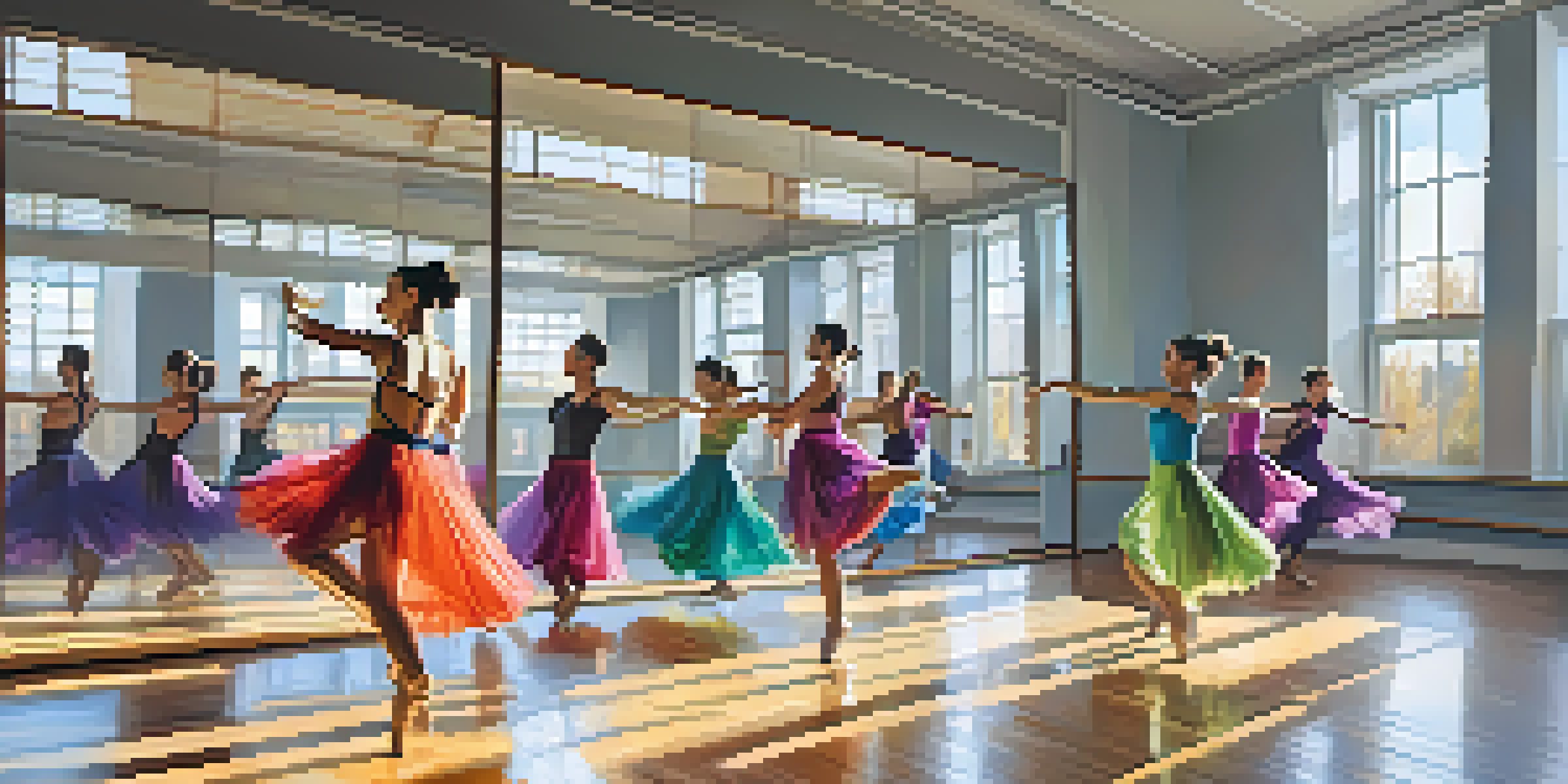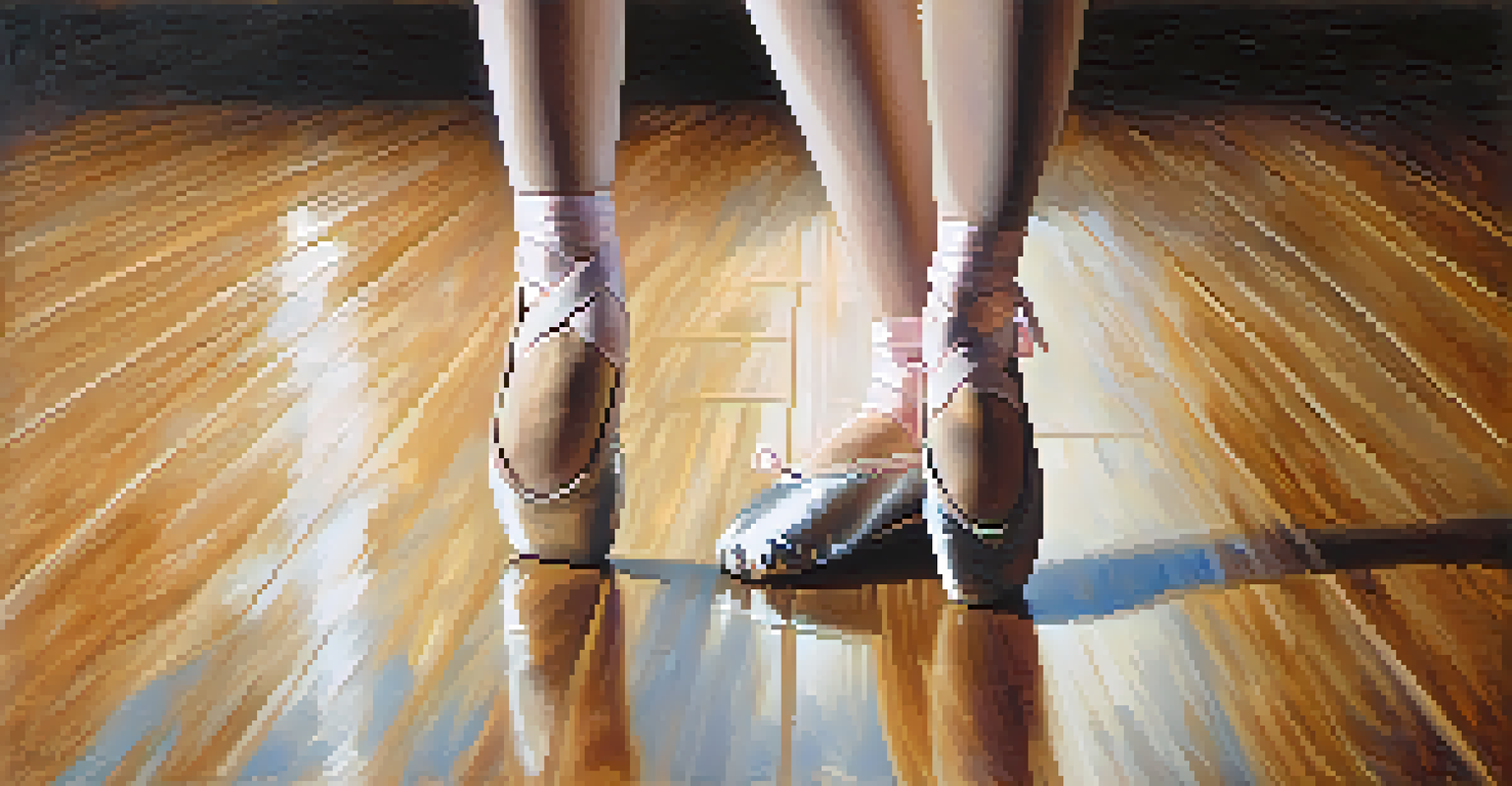The Role of Music Selection in Dance Competition Success

Understanding the Importance of Music in Dance
Music serves as the heartbeat of any dance performance, setting the tone and pace for the entire routine. Choosing the right song can elevate a dancer's expression, making the choreography more impactful. Without a suitable track, even the most skilled dancers might struggle to connect with their audience.
Music is the shorthand of emotion.
When dancers select music that resonates with their style, it enhances their ability to convey emotions and tell a story. This connection between music and movement creates a synergy that judges and audiences can feel. In essence, the right music not only complements the choreography but also amplifies its overall effect.
Moreover, music can dictate the energy level of a performance. A lively track can pump up the excitement, while a slower melody can draw in the audience for a more intimate experience. This dynamic range is crucial in competition settings where capturing attention is key.
Choosing the Right Genre for Your Dance Style
Different dance styles have distinct musical genres that enhance their authenticity. For instance, a classical ballet piece might require a symphonic score, while hip-hop thrives on contemporary beats. Understanding these nuances ensures that the music selection aligns with the dance style.

Selecting the appropriate genre not only showcases the dancer's technical skills but also respects the cultural roots of the dance form. This respect can resonate with judges who often value authenticity in their scoring. It's like wearing the right outfit for an occasion; the right genre sets the stage for a successful performance.
Music Shapes Dance Performance
The right music enhances choreography, creating a powerful connection that captivates audiences and judges.
Furthermore, incorporating unique genres can set a dancer apart from the competition. By blending styles or choosing unexpected tracks, dancers can create a memorable impression that lingers in the minds of judges. This creativity in music selection can be a game-changer in competitive dance.
The Role of Rhythm and Timing in Dance Music
Rhythm is the backbone of dance; it guides every step and movement. When dancers select music with a clear and compelling rhythm, it helps them stay in sync with their choreography. A mismatched rhythm can lead to missteps and disrupt the flow of the performance.
Dance is the hidden language of the soul.
Moreover, timing is crucial in dance, and music can make or break it. Dancers must be aware of key moments in their routine where timing is essential, such as accents or dramatic pauses. Choosing music that highlights these elements can enhance the overall impact of the performance.
In competitive settings, judges pay close attention to how well dancers adhere to the music's rhythm and timing. A well-executed performance that aligns perfectly with the music can lead to higher scores. This connection between music and movement is what often separates the winners from the rest.
Emotional Connection: Music's Influence on Performance
Music has the power to evoke emotions, and dancers can harness this power to elevate their performances. When dancers feel a connection to their chosen music, it reflects in their movements, facial expressions, and overall energy. This emotional engagement can captivate both judges and audiences alike.
A great example is a lyrical dance that tells a story of heartbreak or joy; the right song enhances the emotional journey. Dancers who can communicate these feelings effectively through their music selection often leave a lasting impression. This emotional depth can be a decisive factor in competitions.
Genre Matters in Dance Styles
Choosing the appropriate genre not only showcases technical skills but also honors the cultural roots of the dance.
Additionally, music can serve as a motivational tool. Dancers who connect with their song on a personal level may feel more motivated to perform at their best. This intrinsic motivation can translate into a more passionate and engaging performance, further boosting their chances of success.
How Music Selection Impacts Choreography
The choice of music greatly influences the choreography itself. Choreographers often tailor their movements to the nuances of the music, ensuring a harmonious blend. This relationship between music and choreography is crucial for creating a seamless performance that flows effortlessly.
In some cases, the music can even inspire the choreography. Unique sounds, shifts in tempo, or lyrical phrases can spark creativity and lead to innovative dance sequences. This synergy allows dancers to push boundaries and explore new artistic expressions.
Moreover, a well-selected track can highlight specific movements, drawing the audience's attention to key moments in the performance. When choreography is designed around the music, it creates a visually stunning experience that resonates with viewers and judges alike.
The Significance of Originality in Music Choices
In the competitive dance world, originality can set a performer apart. Choosing less conventional music can create a memorable performance that stands out in a sea of competitors. Judges often appreciate creativity and fresh interpretations, which can lead to higher scores.
Original music selections allow dancers to showcase their unique personality and style. Whether it's an obscure indie track or an unexpected remix, original choices can add a personal touch to the performance. This individuality can resonate well with both judges and audiences, creating a lasting impression.
Originality Boosts Competitive Edge
Unique music selections can make a performance memorable, setting dancers apart in a competitive landscape.
However, it's important to strike a balance between originality and appropriateness for the dance style. While standing out is essential, the music must still align with the choreography and genre. This thoughtful approach to music selection can enhance the overall effectiveness of the performance.
Preparing for the Competition: Music and Practice
Once the music is selected, it becomes an essential part of the practice routine. Dancers need to familiarize themselves with the musical nuances, ensuring they can perform confidently. This preparation allows them to focus on timing, rhythm, and emotional delivery during rehearsals.
Practicing with the chosen music also helps dancers develop a deeper connection with their performance. As they repeat the choreography to the track, they learn to interpret the music through their movements. This connection enhances their ability to convey the intended emotion during the actual competition.

Additionally, rehearsing with the music allows dancers to identify any potential challenges. They can adapt their choreography to fit smoothly with the music, creating a polished and cohesive performance. Proper preparation can make all the difference on competition day.
Final Thoughts on Music Selection for Dance Competitions
In conclusion, music selection is a vital component of dance competition success. It influences everything from choreography to emotional connection and audience engagement. Dancers who understand this relationship can leverage it to maximize their performance potential.
As competition approaches, dancers should take the time to carefully consider their music choices. Originality, rhythm, and emotional resonance all play significant roles in how well a performance is received. By putting thought into music selection, dancers can enhance their chances of success.
Ultimately, the right music can transform a dance routine from good to unforgettable. Whether it’s a classic piece or an innovative track, the impact of music in dance competitions cannot be overstated. It’s the magic ingredient that can lead to triumph on the dance floor.